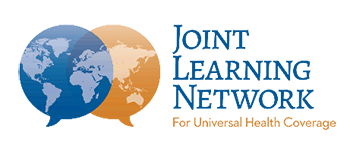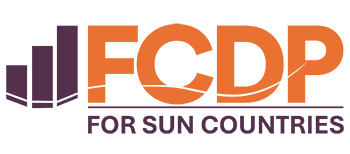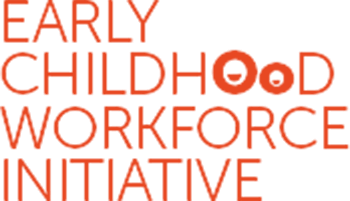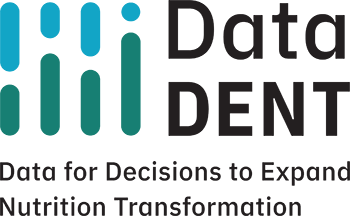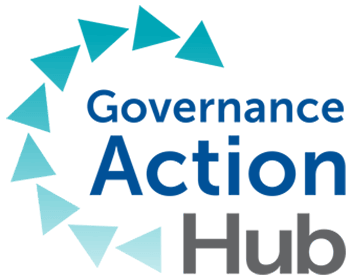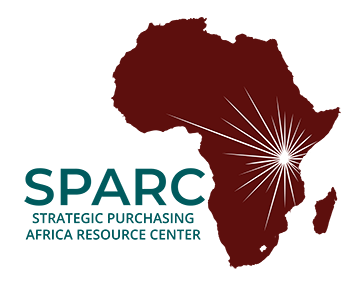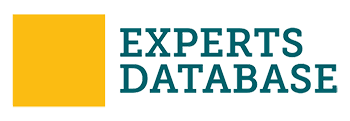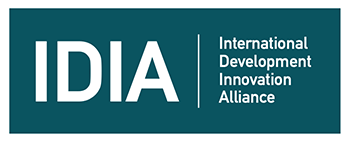Q&A: How R4D and Ethiopia co-created a roadmap for MMS expansion to support maternal health
This Q&A has been edited for clarity and length.
Every year, thousands of Ethiopian women suffer from micronutrient deficiencies that contribute to adverse birth outcomes, including preterm birth, low birth weight and stillbirth. Multiple micronutrient supplements (MMS) – prenatal vitamins containing 15 essential nutrients– offer a superior alternative to the current standard of care, iron folic acid (IFA), in improving maternal and newborn health outcomes. Recognizing the opportunity for impact, Ethiopia’s Ministry of Health, with support from UNICEF and Results for Development (R4D) through the Gates Foundation-funded Market Shaping for MMS for Antenatal Care Initiative, undertook the development of a national roadmap to reach every pregnant woman with MMS by 2030.
Ethiopia’s MMS roadmap was developed through a highly collaborative process facilitated by R4D, bringing together the Ministry of Health and a wide range of partners around a shared vision and goal for scale-up. The roadmap features a detailed, co-created operational plan — costed by R4D — to guide implementation and identify investment priorities. R4D’s co-creation approach ensured that the roadmap reflected diverse expertise, strong government ownership, and actionable next steps.
In this Q&A, Market Shaping Program Officer Brighid Morgan spoke with Tadele Deres, a Nutrition Specialist in Ethiopia’s Ministry of Health who worked extensively on the MMS roadmap, as well as Senior Program Officer Yohannes Addisu and Nutrition Associate Director Dr. Wossen Negash from the R4D Ethiopia office to gather further insight into the roadmap development and costing process. Key themes highlighted by interviewees include how a collaborative, government-led process shaped Ethiopia’s MMS roadmap. Through co-creation, inclusive stakeholder engagement, and iterative learning, the team tackled complex challenges to build a plan that is technically sound, integrated with ongoing government priorities, and locally-owned.
What is a “co-creation” approach and why was this approach chosen for this work? How did it shape the process?
Yohannes Addisu: “Co-creation” is R4D’s method for designing, developing and implementing interventions in collaboration with relevant stakeholders. This approach aims to make interventions actionable by engaging key government stakeholders and partners at each stage of the process, typically through facilitated workshops and regular meetings.
For the Ethiopia MMS expansion and scale-up roadmap, the co-creation approach began with a stakeholder mapping to ensure identification of important stakeholders based on their areas of technical expertise. This approach brought together diverse perspectives and enabled participants to contribute meaningfully to the roadmap. We believe that this inclusive process has also helped foster a sense of ownership among the stakeholders involved.
Tadele Deres: [The co-creation approach was] one of the most beneficial elements of developing the MMS roadmap…[w]e were able to create a dynamic and inclusive environment by working with a wide range of stakeholders, including academic institutions, professional associations like the Midwife Association, other government agencies like EPHI and EFDA, development partners, and pharmaceutical companies.
Who were the key stakeholders involved, and how were they engaged in the process?
YA: We engaged a wide range of stakeholders in roadmap development and costing. These included representatives from government agencies under the Ministry of Health – like the Ethiopian Food and Drug Administration, EFDA, Ethiopian Public Health Institute, EPHI, Ethiopian Pharmaceuticals Supply Service, EPSS, and Armauer Hansen Research Institute, donors and development partners, representatives from selected professional associations, local manufacturers, as well as members of the private sector.
These stakeholders were invited to participate in the co-creation workshops, and members of the National MMS Technical Advisory Group (MMS-TAG) were also engaged through regular meetings to review and provide input into the roadmap.
What strategies did you use to ensure the process was truly participatory and government-led?
YA: First, we defined a clear, collaborative process for working together. We jointly developed and aligned on a workplan to guide the roadmap development with the MOH Nutrition Coordination Lead Executive Office. Co-creation workshops were co-planned and co-facilitated between the government and R4D, with inputs from UNICEF and the MMS Technical Working Group. Furthermore, we held regular check-in meetings with the MOH and UNICEF to monitor progress against the workplan and gather continuous feedback and guidance to maintain a high quality of work.
TD: This diversity [in MMS stakeholders consulted] made the conversations more in-depth and guaranteed that the roadmap took operational and policy-level realities into account… [T]he WHO health system building blocks were used as a framework to help bring stakeholders together around a common goal…[which] established a strong basis for successful implementation by promoting learning, respect for one another, and a strong sense of ownership.
What were some of the biggest challenges or uncertainties faced when creating and costing the implementation plan?
Dr. Wossen Negash: Navigating the unknowns was a challenge. The MMS roadmap development process was based on the best available evidence, including implementation research to evaluate the acceptability, feasibility, and effectiveness of MMS. But since we were creating a new intervention without prior experience, there were still many unknowns, like the effectiveness of wide scale implementation and the total cost required for MMS introduction and scale-up. To work with the uncertainty, we developed multiple scenarios based on different assumptions which helped us identify potential challenges and opportunities.
Another challenge was identifying and prioritizing the most significant and MMS-specific issues to address. The MMS roadmap is not meant to address all the issues of the health care system in the country, but we do also want to take this opportunity to strengthen ANC systems. The roadmap strives to increase and sustain demand for antenatal nutrition services, improve quality of antenatal care (ANC), and ensure sustained availability, provision and utilization of MMS.
Prioritizing the most critical issues pertaining to MMS was a major challenge. So, we came up with long lists of key activities for each thematic area first. Then we focused on resolving the most significant issues specific to MMS, instead of getting overwhelmed with secondary problems that are more related to the overall health care system. This required a long iterative process and a series of workshops.
It was all a learning process. As a team, we gained significant insights throughout the process, made necessary adjustments, and endeavored to maximize our resources.
TD: Harmonizing the various viewpoints and expectations of stakeholders, including government agencies, development partners, academic institutions, and the private sector, was a significant challenge. Each brought their own operational realities and priorities. For instance, national organizations like EPHI, EFDA, and universities concentrated on local viability and regulatory alignment, while development partners like UNICEF, CHAI, JHU, and Save the Children highlighted evidence and best practices from around the world.
We used a highly participatory strategy to address this, setting up inclusive workshops and consultations that promoted candid discussion and the development of consensus. These disparate viewpoints were brought into alignment by the roadmap’s common language and framework, which was based on the WHO health system building blocks. This made the roadmap technically sound, locally owned, and implementable.
What was one major learning from this experience that you think could inform similar efforts in other countries?
WN: A few key learnings come to mind. First is the importance of government ownership and stakeholder engagement. Strong government leadership and broad stakeholder engagement were pivotal in ensuring the MMS roadmap’s resilience, sustainability, and national relevance.
Second is the importance of an iterative process. The process embraced ongoing feedback and iterative improvement, allowing for continuous learning and adaptation rather than seeking a one-time perfect solution. By treating the roadmap as a living document, adjustments can be made based on new insights from implementation.
Lastly, it’s critical that the roadmap activities can be integrated into existing systems so that they can be supported by current resources. Some activities require additional investment as part of the costing of the MMS roadmap. This approach helped ensure that the MMS expansion and scale-up roadmap reflected a reasonable and feasible investment cost.
Could you describe an aspect of the MMS roadmap development and costing process that was particularly eye-opening or revealing?
TD: The costing process was one of the most enlightening elements of developing the MMS roadmap. It made clear how much money would be required to expand MMS throughout Ethiopia. Even though micronutrient deficiencies are widely recognized, the costing exercise gave us a better understanding of the entire range of resources financially and logistically needed to successfully scale MMS.
What do you see as the next steps for scaling MMS in the country?
WN: The government is currently leading the planning of a dissemination workshop* to share out the roadmap as well as other key findings from recent MMS-related research in Ethiopia. After this workshop, the government will lead the development of a financing plan to ensure that the implementation plan and specific activities are funded and therefore can be completed.
At the time of publication, this workshop has not yet been scheduled but is tentatively planned for Q4 2025.
With the roadmap nearly complete, Ethiopia is poised to turn planning into action. Over the coming year, the Ministry of Health will lead dissemination and financing efforts to ensure every pregnant woman can access MMS through routine antenatal care.
The collaborative, co-creation process underpinning Ethiopia’s roadmap offers valuable lessons for other countries aiming to improve maternal nutrition and scale-up MMS. To date, R4D has supported Ministries of Health and implementing partners in ten countries across sub-Saharan Africa and Southeast Asia to introduce or expand access to MMS.
To learn more about how R4D can support MMS introduction of scale-up in your country, please reach out to Amy Roberts, Associate Director for R4D’s Market Shaping Practice.


